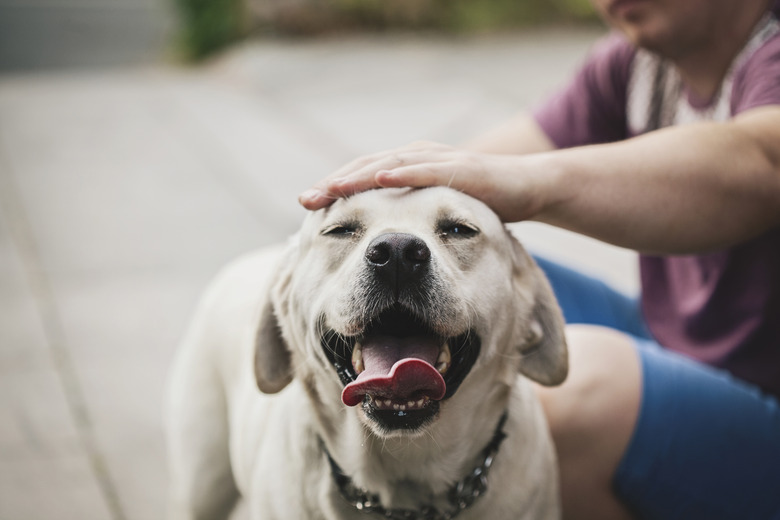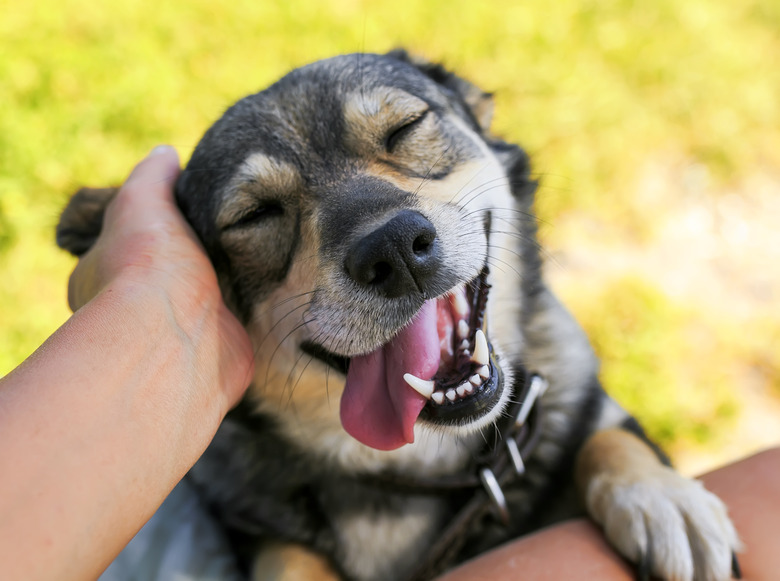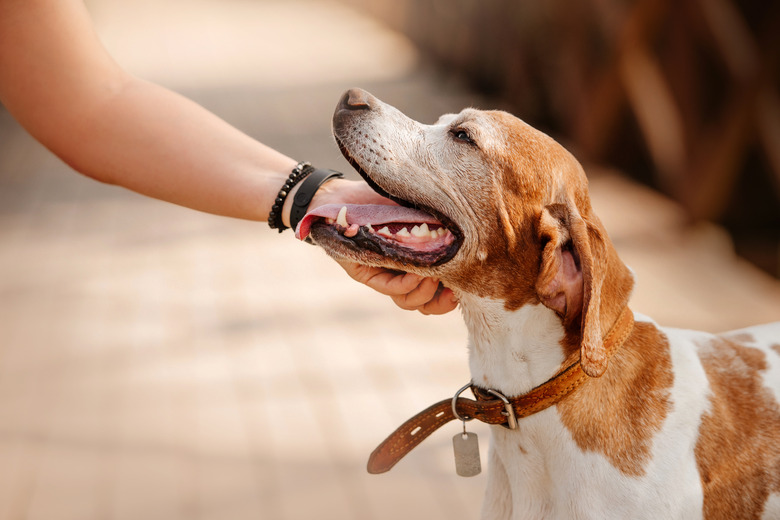Why Do Dogs Lift Their Heads When You Pet Them?
You've likely noticed it before—you reach down to offer your canine a light pat on the head when their head raises to meet you, perhaps with an upturn of their snout and eye contact in that moment.
Dogs and their human counterparts have developed a symbiotic relationship over centuries, and over time, dog owners have learned to read the physical cues they give off. Some actions, however, like lifting their heads when they are petted, may be unclear, and can mean different things for different dogs.
Dogs and body language
Dogs and body language
In addition to written and spoken language, humans are also able to communicate with one another through body language, which canines rely on entirely to communicate among themselves. While dogs do have the ability to understand some words, often used as behavioral commands, reading their body language is important in gaining some understanding about their feelings. Body language cues include dog behavior like tucked tails and raised hackles, but also more subtle actions, like eye contact and facial expressions. A dog who lifts her head to either meet your hand or get a better look at your face is likely doing so to express trust, curiosity, or simply, to try to get a better look at what's going on.
Perceiving the world around them
Perceiving the world around them
According to neuropsychological researcher and Psychology Today writer Stanley Coren, it isn't so much a person's face that a dog is deciphering, but their hands. Dog owners, whether they realize it or not, continually condition their canines to look to their hands for directions, often in their training practices which are usually hand signal-based. Additionally, the rewards that dog owners offer for behavior well done almost always come from their hands, which has allowed dogs to associate food with fingertips, and may cause them to look or reach toward them in anticipation.
An especially adorable behavior, the head tilt, is usually used to better understand what's going on around them. VCA Hospitals states that a tilted head may help a dog hear and even see better, especially true among dogs with long snouts, who may have more trouble seeing things up close than their smushed-faced peers.
Head touching and fear
Head touching and fear
While some dogs may reach their heads toward you, others might flinch, cower, or simply move out of the way when someone attempts to pat them on the head. Flinching can be a learned behavior, sometimes seen in dogs who have undergone abuse or other hardships, and may either lead to anxiety, or be a reaction to it. Additionally, some dogs who suffer from injuries or ailments, like arthritis, may find a heavy pat to be just a little uncomfortable on their bones, and may shy away from an outreached hand as response.
Other dogs simply don't like to be touched on that part of the body. In the same way that some people don't prefer to hug or cuddle with a loved one, certain dogs could do without a head rub, and may be more receptive to affection on other parts of the body, like their bellies, sides, or possibly the scruff of their necks. For canines with whom you don't have a close bond, a safe practice is to avoid reaching over their head—always try to approach a dog by standing off to the side, rather than head on, and offer a touch under their shin rather than on their crown. To teach a dog to enjoy head petting, the American Kennel Club recommends using positive reinforcement to help them associate touch with reward.
In Conclusion
In Conclusion
Each dog's reaction to head pets differs depending on the dog. Most often, dogs tilt their heads upward to get a better idea of what's going on around them, although some may be simply sniffing for a treat or reward. If your dog cowers from an overhead touch, try offering an under-the-chin scratch to start, and consult a veterinarian to rule out any physical pain issues.


